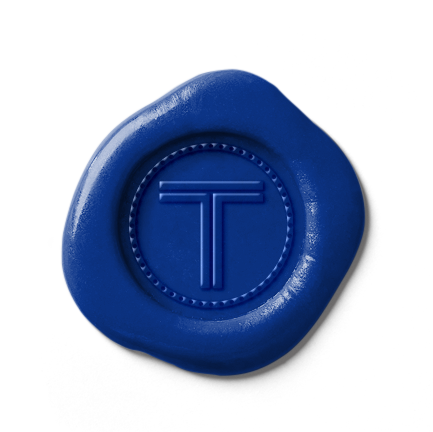Grapevines and Olive Trees
Looking out on the grapevines at Agricola Calfata
Harvest Season at Agricola Calafata
In northern Tuscany, a short drive outside of Lucca, there’s a quiet stone farmhouse overlooking a small vineyard.
The farmhouse is young by Italian standards—it was built around 1700—but the vineyard outside is home to some of the longest-producing grapes in the region. Many were planted more than 150 years ago.
Next to the farmhouse, on gently sloping hills, is a copse of olive trees. These, too, are far older than most of the olive trees nearby. When the morning sun hits them, it glances off an abundance of small, shiny olives, and the trees appear to light up.
This quiet vineyard, tucked away in the hilly Italian countryside, is home to Agricola Calafata.
Calafata creates some of Italy’s best biodynamic olive oil and wine. Everything is dry farmed, made good only by seasonal rainfall and Tuscany’s plentiful sunlight. While the harvests are small, their quality is extraordinary. Every olive and grape contains a depth of nuance that you’d struggle to find anywhere else in Tuscany.
Next to the farmhouse, on gently sloping hills, is a copse of olive trees.
Making olive oil and wine is hard work. Making biodynamic olive oil and wine, all by hand, is significantly harder.
And yet, you won’t find a happier group of people than the artisans at Calafata.
“You need to love this job,” Says Daniele Tuccori, the cellarmaster. He says it after a wheel snaps off an enormous stainless steel tub, nearly spilling the thousand liters of fresh-pressed grape juice it contains. “If you don’t love this job, you will be miserable.”
Daniele, it seems, can do a bit of everything. He’s a physicist, mechanic, farmer, chemist, engineer, artist, inventor, or priest, depending on what the situation demands.
Without pesticides, irrigation, harvest machines, and commercial amenities, Calafata has to make their land as strong as possible. That is the only way to produce exceptional olives and grapes that survive the season.
One day, Daniele brings a copper container full of what appears to be dirt.
“Humus,” he says. He’s smiling.
Humus is an Old World way of enriching the earth. It’s plant matter that’s been broken down over months by wild bacteria. It doesn’t smell like anything, and at first glance you’d think it’s plain soil. In reality, it’s as valuable as gold: its humble appearance hides an enormous concentration of beneficial microorganisms.
“We spread this over our land every year,” Daniele says. “It increases soil biodiversity and keeps the plants happy.”
It’s not just nutrients. The bacteria in humus protect plants from disease and help the soil retain moisture, allowing the grapevines and olive trees to benefit from Tuscany’s rainy season without the need for additional irrigation.
Humus and other artisanal practices are slowly disappearing. Modern farmers turn to chemicals and other, easier alternatives with faster returns. But at Calafata, everything is done with the soil in mind. Biodiversity has to come first; it’s the only way to produce truly extraordinary Natural goods.
Natural Wine Growers, Daniele and Mauro, walk through the vineyards.
Every morning, Daniele meets Mauro, another of Calafata’s artisans, and together they plan the day. Their schedule, ultimately, depends on Nature. Harvests, fermentation schedules, bottling dates, and everything else change every year, depending on the season. The reward for that flexibility is enduring land that produces world-class wine and olive oil, decade after decade.
“Older olive trees are special,” explains Mauro. “The olive trees were here long before we were, and the types we have are rare in Italy.”
Most modern olive trees, he says, are clones of a Spanish variety. They grow quickly and produce lots of olives after two or three years. However, the abundance is short-lived. The olives stop coming after about twenty years.
“Commercial producers grow their olives on flat land, where machines can access them,” Mauro says. “Machines shake the trees and stress them, which shortens their life.
“Our trees are ancient Italian varieties that are uncommon today: Moraiolo, Leccino, and Frantoiano.
“They were planted on hills 130 years ago because the farmers saved flat land for grapes and vegetables. Machines can’t get up the hill, so we have to harvest by hand.”
Hand-harvesting is very labor-intensive, but it also produces better olive oil. Gentle handling means the trees are less stressed, which is why they continue to produce olives after 130 years. And like with most food, time produces better flavor.
“Older olive trees are prized for their oil,” Mauro says, “but they’re rare today. We’re fortunate to have some of the best trees in Tuscany.”
Calafata’s olive oil is exceptional. Its unusually high concentration of polyphenols makes it vibrant and spicy, with a greater depth of flavor than anything you’ll find on your grocery store’s shelves.
This kind of olive oil can’t exist without biodynamic farming. It also can’t exist without the commitment of the artisans who make it—growers who are willing to work harder and tend to their land the right way, preserving methods that have existed for hundreds of years.
Mauro and Daniele are two of those growers, and their passion comes through in everything they make. When asked why he’s still working to improve this land after a decade, Daniele stops and thinks for a moment.
“Nature is my boss,” he says. “I am always connected to her. That, I think, is why this work brings me peace.”




